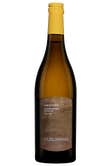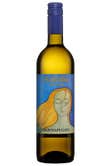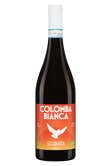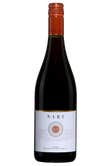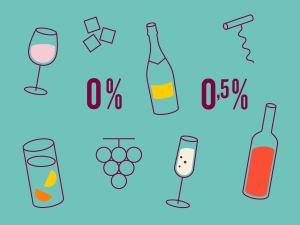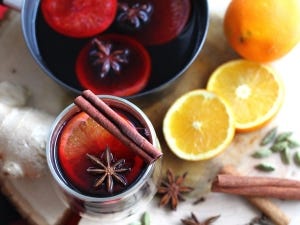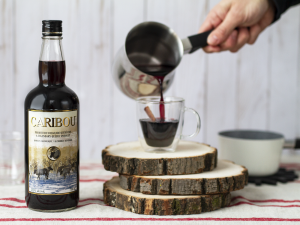A story of vines and wines
On the largest island in the Mediterranean, winemaking traditions go back millennia. Indeed, Sicily is one of the world’s oldest viticultural regions. It all started in Antiquity, when the Phoenicians introduced grapes to the area around the 7th or 8th century before the common era, and they were followed by the Greeks, who brought sophisticated techniques and new varietals. And under the Romans, Sicilian wine really took off, becoming incredibly popular and widely exported throughout the vast empire. This cultural mix, later further enriched by numerous religious influences, left countless historic, culinary and wine-related treasures in its wake.
Returning to their roots
This exceptional island will take your taste buds on a wonderful journey thanks to its wide variety of wines made from grapes indigenous to Sicily. But this plentiful local selection is a fairly recent phenomenon. It grew out of a movement spearheaded by winemakers that flourished in the ’80s. The movement’s mission was to reaffirm the value of Sicilian grapes, which for years had been ignored in favour of international varietals, but which are better adapted to the island’s weather conditions and highly sought after. Today, this dynamic wine region is famous around the world and has once again given pride of place to local varietals like Grillo, Catarratto, Nero d’Avola, Perricone and Frappato. The emphasis on preserving Sicilian heritage and its particularities led to the creation of the Controlled Designation of Origin Sicilia DOC in 2011, which oversees wine production while ensuring best practices.
The benefits of returning to the terroir goes well beyond cultural influence. Because grapevines indigenous to Sicily are better suited to the local environment, they thrive with less help from pesticides and chemical products. What’s more, the mild Sicilian climate—ideal for organic winemaking—and the wind that dries the vines mean that the plants are less vulnerable to disease. These factors account for why the island is home to such a high concentration of organic vineyards.
Sicily was in fact the first region in Italy to try organic agriculture. And these days, several vineyards combine traditional winemaking with science and technology to reduce their carbon footprint, for example with photovoltaic solar panels and cultivation practices that foster protecting biodiversity and soil quality.
Flavours sculpted by the terroir
Italy’s Sunny Island can be compared to a mosaic of contrasting microclimates and terrain. While Sicily’s western side enjoys a hot and dry subtropical Mediterranean climate, the volcanic area around Mount Etna in the east is characterized by more precipitation and high thermal amplitude because of the altitude. This translates to wildly diverse soil types and the distinct qualities of the varietals grown in them. It’s this influence of the terroir that explains why Sicilian volcanic wines possess astonishing freshness, smoky aromas and pronounced minerality.
Myriad varietals to try


Nero d'Avola, a local favourite, is a black grape that’s native to Sicily and can be found all over the island. It produces highly aromatic, meaty reds that are great candidates for aging and charm the senses first with a ruby red appearance and then with fruity, spicy and floral notes, structured tannins and a generous body. Then there’s Frappato, an ancient Sicilian varietal that’s enjoying a major comeback. Enthusiasm for this thin-skinned grape can be explained by its sharp acidity, fruity vigour and the juicy quality of the red wines it yields.
Although best known for reds, Sicily’s white wines are becoming increasingly popular—and they fully deserve their place in the sun. Grillo, which holds up well to extreme heat, was once the favourite of Julius Caesar. It leans more on the dry side, presenting a complex profile—herbaceous, floral and chalky, all at once—as well as sharp acidity and a silky yet round mouthfeel. Traditionally known as one grape among many used to make Marsala fortified wine, Lucido, a variety of Catarratto, produces dry whites with medium acidity and a striking aroma. Their bouquet sometimes includes lemon, sometimes peach or pineapple, and have a flavour profile with notes of dried flowers, thyme and sage.
Nature and (viti)culture
To savour Sicilian wine, what could be better than going where their grapes are grown? Many wineries offer a multisensory viticultural experience by opening their doors to the public. As well as guided tours and tastings, several also have cozy lodgings, gourmet restaurants, winemaking workshops and even Sicilian cooking classes. That way, you can enjoy exceptional wines in idyllic settings, from the majestic slopes of Mount Etna and the coastal regions swept by maritime breezes and the Sirocco to the constellation of surrounding islands.
Travelling in Sicily means opening a veritable treasure trove of natural, cultural and culinary gems. And it means coming home with delicious memories of a singular terroir—and the desire to return. Arrivederci, Sicilia!
In partnership with Sicilia DOC




To discover
See all Sicilia DOC wine
 Access to SAQ Inspire personalized services and store inventories are unavailable at the moment.
Access to SAQ Inspire personalized services and store inventories are unavailable at the moment. Free in-store delivery with purchases of $75+ in an estimated 3 to 5 business days.
Free in-store delivery with purchases of $75+ in an estimated 3 to 5 business days. 





